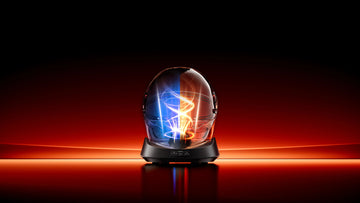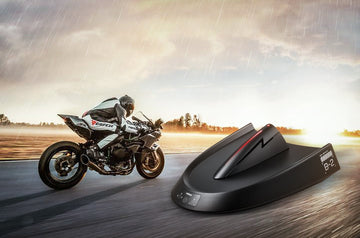Is a Helmet Dryer a Gimmick? A Reproducible Test and Buying Checklist
Key Promise Card
- Drying time: sweat-wet 20–40 min; rain-soaked 60–120 min
- Temperature ceiling: ≤50 °C (low-heat, liner/adhesive friendly)
- Noise control: ≤40 dB(A) @1 m
Summary: For riders who sweat often, live in humid climates, and need the helmet ready the same day, a well-designed low-heat helmet dryer is not a gimmick. The value comes from closed-loop temperature control + directed airflow + predictable timing, not raw wattage. Below you’ll find a reproducible test method, realistic result bands, safety limits, an emergency SOP, and a six-point buying checklist.
1) When it’s worth it—and when it isn’t
Worth it: you ride or train frequently, your liner is often damp or smelly, you need the helmet again the same day or next morning, and your home is humid or poorly ventilated.
Optional: you wear a helmet rarely, live in a dry climate, have ample ventilated space, and don’t care about smell or timing.
One-line rule: if you often come home to a damp/smelly liner and must wear it again soon, a dryer pays for itself in certainty and hygiene.
2) Reproducible method
Helmets: one open-face (road), one full-face, one winter/ski with thicker liner. EPS/EPP liner with removable pads.
Scenarios:
- Sweat-wet: simulate post-ride moisture; mass gain ≈ +15 g.
- Rain-soaked: water ingress through vents/pads; mass gain ≈ +35 g.
Environment: 24–26 °C; relative humidity RH 60%. Optional validation at RH 40% and 80%.
Measurements and probe placement: kitchen scale (±1 g); temperature probe at cavity center; sound meter or phone app at 1 m in front. Repeat n ≥ 3 per scenario and report as mean ± SD.
Pass criteria: “ready to wear” = mass within 1–2 g of baseline and no wet spots on touch; “truly dry” = no mass rebound or odor return after a 12 h rest.
3) Result bands by scenario & helmet type
| Scenario / Helmet | Open-face (road) | Full-face | Ski / thick liner |
|---|---|---|---|
| Sweat-wet (+15 g) | 20–30 min ready | 30–40 min ready | 35–50 min ready |
| Rain-soaked (+35 g) | 60–90 min dry | 90–120 min dry | 100–140 min dry |
| Temperature peak | ≤ 48–50 °C steady | ≤ 48–50 °C steady | ≤ 48–50 °C steady |
| Noise @1 m | 33–38 dB(A) | 34–40 dB(A) | 34–40 dB(A) |
Humidity correction: with airflow and heat equal, every +10% RH typically adds ~10–20% to drying time.
Night-use line: ≤40 dB(A) at 1 m is library-quiet; stand the unit 10–20 cm off walls and use a rubber pad to further cut perceived noise.
4) Why low-heat + directed airflow beats brute force
- Closed-loop ≤50 °C: kinder to EPS/EPP and common adhesives; trade time and airflow for safe drying instead of blasting high heat.
- Directed airflow: send air to hotspots—forehead, cheek pads, crown—so you don’t get a dry shell with a damp core.
- Right-sized airflow: compact units are effective around ~15–30 m³/h when ducting is done right; wattage numbers alone are meaningless.
- Silence drives frequency: a quiet device gets used nightly; predictability is the real utility.
5) Alternatives matrix: time, risk, noise
| Option | Sweat-wet time | Rain-soaked time | Hands-on | Risk | Noise | Notes |
|---|---|---|---|---|---|---|
| Air-dry | 4–12 h | 12–48 h | None | Re-wet/odor | Low | Weather and space dependent |
| Fan + hanging | 2–6 h | 6–24 h | Low | Night disturbance | Medium | Weak in winter |
| Hair/space heater | 20–60 min | 60–120 min | High | High heat risk | Medium | Handheld and supervised; not for routine |
| Purpose-built dryer | 20–40 min | 60–120 min | Low | Low-heat | Low | Directed airflow and timer allow unattended use |
6) Emergency SOP: sweat-wet and rain-soaked
- Pre-absorb: towel-press hotspots; for rain, shake/press first.
- Aim airflow: nozzles or ducts toward forehead and cheek pads; crack the visor on full-face helmets.
- Low-heat: target ≤50 °C with medium to high airflow.
- Timer and check: sweat 30–40 min; rain 90–120 min; confirm by touch and scale.
- Re-wet check: after a 12 h rest, ensure no mass rebound or odor return.
7) Safety & compliance
- Temperature limits: prolonged 60–90 °C streams can stress EPS/EPP and adhesives; avoid high-heat blitz as a routine.
- Electrical and materials: prefer dual over-temp protection, flame-retardant housings, and tip or drip guards.
- Odor features: carbon filters and replaceable media are a plus. Treat UV or ozone as enclosed, interlocked odor control—not medical claims.
- Home use: keep inlets and outlets clear, avoid soft enclosures, and keep away from flammables.
8) Six-point buying checklist
- Closed-loop temp control: stable ≤50 °C.
- Directed airflow: ducts or nozzles reach forehead, cheek pads, crown.
- Sized airflow: compact units ~15–30 m³/h with proper ducting.
- Quiet operation: ≤40 dB(A) @1 m with no whistle.
- Safety redundancy: dual over-temp, flame-retardant shell, tip or drip protections.
- Multi-helmet fit: swappable nozzles or stands for open-face, full-face, and ski helmets.
9) FAQ
1) Can a sweat-wet helmet really be ready in 40 minutes?
With ≤50 °C low-heat and directed airflow around RH ~60%, 20–40 minutes to “ready to wear” is typical. Thicker liners or tighter shells take longer. Always confirm by touch and scale.
2) Why does rain-soaked drying take 60–120 minutes?
Water permeates fiber depths and seams; it takes time for migration and evaporation. Pre-absorption (shake/press) helps a lot.
3) Why the ≤50 °C ceiling?
It’s kinder to EPS/EPP and common adhesives. The safe formula is low heat + airflow + time, not brute temperature.
4) Will it disturb sleep?
Quality units measure ≤40 dB(A) at 1 m—library-like. Stand off walls 10–20 cm and add a rubber pad to reduce resonance.
5) Should I use UV, ions, or fragrance?
Mechanical drying does the heavy lifting. Treat UV or ozone as enclosed, interlocked odor control only. Avoid exposed light or residual ozone.
Ready to ride with a dry, fresh helmet?
Shop Helmet Dryer → Learn More →Scope: findings hold under the method, environment, and helmets described. Different devices, climates, and placements will vary. Use the SOP and log template to build your local curve.

